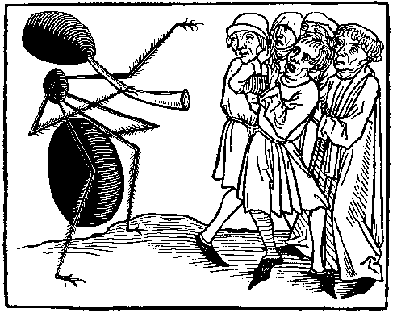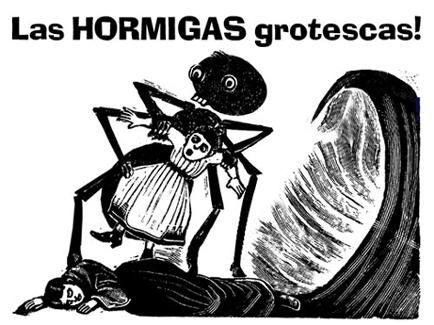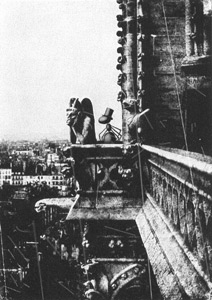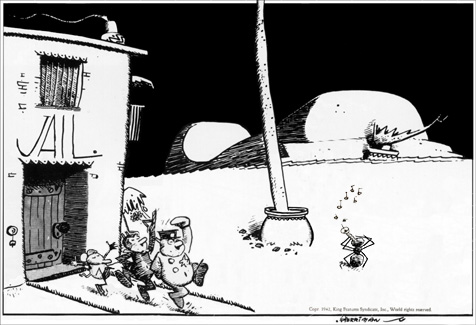 |
 |
 |
 |
 |
 |
 |
 |
 |
 |
 |
| Historical
Allegations from |
| The ceiling at Altamira represents the highest achievement of prehistoric painting. There are very few examples of high Magdalenian art, and these are in incomparably bad condition. The image definitions exploit the natural structure of the cave ceiling at Altamira. Very little was added to the rock protuberances to bring the recumbent bison or "ant" into being. These concentrated forms were achieved only through a combination of all known means of expression: paint was applied with a brush or by blowing, or it was rubbed over the surface, and flints were employed as engraving tools. |  |
| Death
and the notables,
alledgedly
a printer's proof from Der Doten Dantz, woodblock printed by Jacob Meydenbach, Mainz,
1492. In the well known Danse Macabre genre, death is personified as a skeleton that levels all social classes and ranks. Death was often accompanied by animals such as toads or snakes. The ant as a messenger, heralding imminent destruction with his horn, is known only from this print. |
 |
| Las
Hormigas Grotescas.
Cover illustration from a Mexican broadside, executed in the manner of
Jose Guadalupe Posada, printed by A. Vanegas Arroyo in Mexico City,
c. 1900. Typical broadsides were engraved on type metal, printed on cheap paper, often with garish colors, and described crimes, disasters, miracles, bandits and other events from everyday life. Images of this type were known as ejemplos. Generally these were moral lessons in the form of horrible examples of behaviour drawn from current events. The text of the broadside does not illuminate the graphic. There is no other known account in contemporary news collections. Possibly the image refers to an unknown folk tale or child's rhyme. The "teeth" are undoubtedly foreshortened pipes of pan. |
 |
| Based
on Charles Negre's famous photograph of Henry Le Secq at Notre Dame Cathedral, Paris. Print from the 1851 calotype negative in the collection Andre Jammes, Paris. Clearly a fake, the print shows a certain level of skill in the way scratches and other marks of wear have been incorporated to suggest that the imposition of the ant figure was done in the late 19th century. But this is likely not the case. Analysis indicates that there was never a musical instrument of any kind either attached to, or in proximity to the ant figure. Unless his hat hides it. |
 |
|
George Herriman's
KRAZY KAT. |
 |
(apologies to all)
